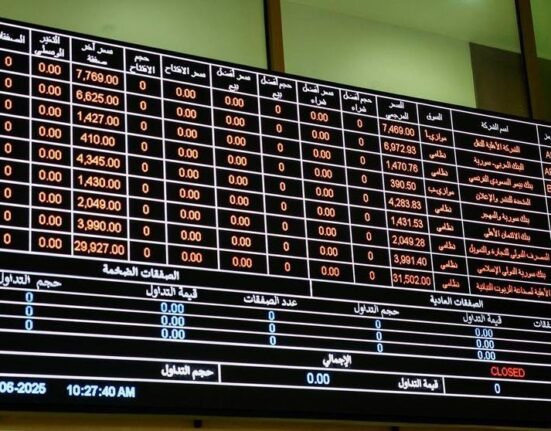If you need income over the short term, whether for a few weeks or a few months, there is no…
If you need income over the short term, whether for a few weeks or a few months, there is no reason to count the days until your next paycheck or turn to predatory, high-interest loans. If you have liquid assets in a brokerage account, you have many ways to put that money to work.
Short-term investment strategies can take idle cash or parked securities and convert them into a steady stream of distributions. Just be sure to reserve a portion for taxes, since much of this income may be taxable at the federal or state level.
[Sign up for stock news with our Invested newsletter.]
Here are five of the best types of short-term investments for generating income, according to experts:
— Money market funds.
— Certificates of deposit (CDs).
— Treasury bills.
— Ultra-short-term bond ETFs.
— Selling covered calls.
Money Market Funds
“The most significant short-term income opportunity for most investors is to move money from their zero-interest bank accounts and into a money market fund that pays a market rate of return,” says James Dowd, CEO at North Capital. “This is an easy sell once people understand what a money market fund actually is and how it works.”
If you have cash sitting idle in your brokerage account, consider putting it to work in a money market fund. The risk with this option is minimal. Unlike traditional mutual funds, the net asset value (NAV) per share of a money market fund is pegged at $1.
Barring the most extreme circumstances like the 2008 financial crisis, that value typically holds, making your capital about as safe as it gets outside of a bank.
To maintain this stability, the fund invests in a variety of underlying securities that are short in maturity, high in credit quality and highly liquid. The interest earned from these holdings is pooled and paid out to investors monthly, net of fees.
Your expected income is represented by the fund’s seven-day SEC yield. Because fees reduce your yield, lower-cost funds are more attractive in this space.
A standout option is the North Capital Treasury Money Market Fund (ticker: NCGXX), which has waived its fee to 0% and currently pays a 4.3% 30-day SEC yield. That sits right in the middle of the 4.25% to 4.5% federal funds rate range.
Certificates of Deposit (CDs)
If your top priority is safety and you want backing from the Federal Deposit Insurance Corp., a money market fund will not cut it. In that case, consider a certificate of deposit, or CD. These are essentially time deposits offered by banks and credit unions.
“CDs are offered with a fixed term, typically ranging from a few months to several years,” explains Taylor Kovar, CEO and founder at 11 Financial. “They provide a guaranteed interest rate, making them a safe and predictable investment.”
The biggest advantage CDs offer over money market funds is rate certainty. Once you lock in a CD, your interest rate is guaranteed for the entire term.
For example, if you buy a one-year CD paying 4.25% and the Federal Reserve cuts interest rates, yields on money market funds will decline accordingly. But with a CD, you’ll continue earning the locked-in rate until maturity.
Unlike a money market fund, however, you cannot access your money at any time without a penalty. If you withdraw early, you typically forfeit some or all of the interest you would have earned.
“The trade-off with CDs is that your money is locked in for the term of the CD,” Kovar notes. “They’re ideal for investors looking for a low-risk option and have a specific time horizon in mind.”
CDs come in many forms, with varying minimum investment requirements, interest compounding schedules and promotional rates. It is worth shopping around to find one that best suits your needs.
Treasury Bills
Another way to earn safe short-term income is by lending money to the federal government through Treasury bills. These are short-term debt obligations issued with maturities of up to 52 weeks, and you can choose from a variety of shorter terms depending on your needs.
Unlike most bonds, Treasury bills do not pay semi-annual interest. Instead, you buy them at a discount to their face value, and when they mature, you receive the face amount. The difference between your purchase price and the amount you receive at maturity is your earned yield.
Treasury bills are among the safest investments available because they are backed by the full faith and credit of the U.S. government. While there is always a theoretical tail risk of a sovereign default, this is not a concern most investors need to worry about. They are also relatively tax efficient, as interest earned is exempt from state and local income taxes.
There are multiple ways to invest. For a hands-on approach, you can purchase individual Treasury bills directly through TreasuryDirect.gov. This platform also allows you to build a ladder. For example, by buying three-month, six-month and one-year Treasurys, investors can benefit from bills maturing and freeing up cash at regular intervals.
If you prefer to outsource the process, you can also invest in a Treasury exchange-traded fund (ETF). These ETFs build portfolios of Treasury bills on your behalf and pass along the accrued interest to you through monthly distributions. They also have some advantages over DIY Treasury ladders.
“When the securities in the ladder mature, the proceeds are reinvested at prevailing market interest rates,” explains JoAnne Bianco, partner and senior investment strategist at BondBloxx. “This is sub-optimal in a declining interest rate environment, when waiting for securities to mature is a key vulnerability for traditional laddered strategies.”
In lieu of a DIY Treasury ladder, an investor could buy Treasury ETFs like the BondBloxx Bloomberg Six Month Target Duration U.S. Treasury ETF (XHLF) or the BondBloxx Bloomberg One Year Target Duration U.S. Treasury ETF (XONE). Both ETFs feature minimal price fluctuations and pay 4.2% and 4.1% 30-day SEC yields, respectively.
“BondBloxx ETFs like XHLF and XONE are rebalanced monthly, capturing prevailing market interest rates and automatically reducing reinvestment risk compared to traditional laddering strategies,” Bianco explains. “Both ETFs also provide stable monthly income and maintain a consistent duration from their monthly rebalance.”
[READ: 5 Great Fixed-Income Funds to Buy for 2025]
Ultra-Short-Term Bond ETFs
Ultra-short-term bond ETFs maintain an average maturity similar to Treasury bills but take on more credit risk. This means they invest in securities that have a slightly higher chance of default compared to U.S. government debt, though still generally within the investment-grade range.
The upside to taking on that added credit risk is a higher yield. If you are comfortable with a bit more day-to-day price movement, these funds can offer better income potential than Treasury bills, without locking your money up for long periods.
“These products are best suited for investors who are saving for a large expenditure (e.g., a down payment, college tuition or a major purchase) with a time horizon of roughly one to three years,” says John Croke, head of investor choice business activation at Vanguard.
A popular example is the Vanguard Ultra-Short Bond ETF (VUSB), which currently pays a 4.7% 30-day SEC yield. That is higher than similar-duration Treasury ETFs like XONE or XHLF because VUSB has the flexibility to hold asset-backed securities and investment-grade corporate bonds. The portfolio remains high-quality overall, with credit ratings ranging from “BBB” to “AAA.”
“Short-term bond funds can also be a logical ‘first step’ back into bonds for investors who may have abandoned a traditional fixed-income strategy amidst the losses of 2022,” Croke says.
That said, VUSB is not a perfect substitute for a money market fund. Its share price can fluctuate and is not designed to maintain a stable $1 NAV. Still, for investors seeking a modest yield boost without taking on much duration risk, it can be a useful short-term option.
Selling Covered Calls
The most advanced and potentially risky way to generate short-term investment income is by selling covered call options on stocks or ETFs you already own.
Here’s how it works. You must own at least 100 shares of a stock or ETF that has an active options chain. From there, you can sell one call option contract, which caps your upside if the stock rises beyond a certain price but provides you with upfront income in the form of a premium.
For example, suppose on April 17, 2024, you owned 100 shares of the Invesco QQQ Trust (QQQ), which closed that day at $444.06 per share. If you wanted to generate short-term income, you could have sold a covered call expiring on April 30, 2024, just 13 days away.
Choosing a strike price of $450, you would have collected around $7.90 per share in premium. Multiplied by 100 shares per contract, that gives you a $790 credit, minus any brokerage commissions. By entering this trade, you’re agreeing to sell your QQQ shares at $450 if the ETF rises above that price.
If QQQ stays below $450 by the expiration date, you keep your 100 shares and the $790 in cash. If it goes above, your shares may be called away, and you’ll be forced to sell at $450 regardless of how high it goes. Either way, you keep the premium, but remember that it’s taxable as income in the year received.
Moreover, the amount of premium you receive isn’t always consistent. It depends on several factors: how close the strike price is to the current price (called “moneyness”), how much time remains until expiration, and how volatile the stock or ETF is. More time until expiration and higher volatility generally lead to higher premiums because there’s a greater chance the option ends up in the money.
Selling covered calls isn’t a free lunch. You still face the same downside risk from your long position if the stock price falls. But if you’re comfortable parting with your shares at a specific target price, a covered call can be seen as getting paid to place a future limit sell order. It gives you a way to produce income from buy-and-hold positions, but at the risk of potentially having to sell them.
More from U.S. News
What ETF Has the Highest Dividend Yield?
8 Top-Rated Income Funds to Buy in 2025
7 Top Income Investments for 2025
5 Best Short-Term Investments for Generating Income originally appeared on usnews.com
Update 04/24/25: This story was previously published at an earlier date and has been updated with new information.







